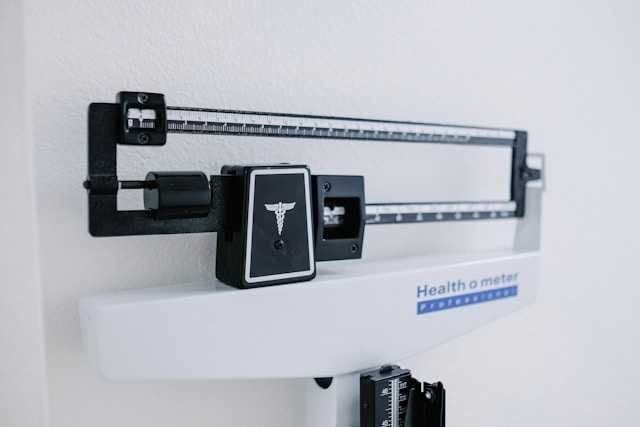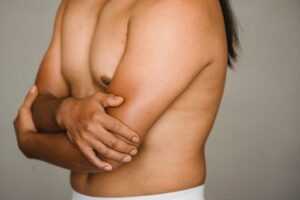Published by Dr MIguel Fernadez Calderón: 22/11/2024
For patients with obesity there are surgical and non-surgical options for weight loss, which are effective both for improving physical appearance and for diseases associated with overweight. In this opportunity we will explain you all about the stomach reductionWe will explain everything about the options available, from the available options to the recovery process, so that you can make the most convenient decision for you.
What is stomach reduction?
Stomach reduction is a variety of surgical techniques designed to reduce the size of the stomach, thereby reducing the ability to digest and process food. These types of procedures allow obese people to lose weight significantly.
Ideal candidates for surgery
For those with obesity who have tried dieting and exercise, but have not been able to lose weight, stomach reduction is a viable option. However, it requires commitment to lifestyle habits to maintain long-term results.
However, not all overweight patients are candidates for a stomach reduction. For this you need to know your BMI, so you will know if you can have a tummy tuck or if you are a candidate for a stomach reduction:
- Have a body mass index(BMI) equal to or greater than 40, i.e. it must be qualified as morbidly obese.
- Having a BMI equal to or greater than 35, but at the same time having some underlying condition caused by obesity, such as diabetes, hypertension or sleep apnea.
Types of stomach reduction procedures
These are the surgeries associated with stomach reduction, commonly known as bariatric surgery.
- Sleeve gastrectomy. Also known as gastric sleeve, this surgery reduces the stomach by approximately 80%, restricting the amount of food that can be consumed. This surgery does not affect the small intestine, reducing the possibility of suffering nutrient deficiencies.
- Gastric bypass. In this operation, a small pouch is created in the upper part of the stomach, where it connects to the small intestine. It reduces the stomach's ability to take in food and decreases nutrient absorption, leading to significant weight loss. In many patients there is improvement for conditions such as type 2 diabetes, but it must be considered that it can produce a nutritional deficit.
- Adjustable gastric band. It consists of placing a silicone band in the upper part of the stomach, where a pouch is formed. These bands are adjusted and, in this way, the amount of food that the stomach can digest is controlled. It is a less invasive option than the bypass and, in addition, it is a procedure that can be reversed or modified according to the patient's needs.
- Gastric balloon. This is a non-surgical option, so it is less invasive. During the procedure, a silicone balloon is introduced into the stomach through endoscopy and then filled with saline solution. The balloon occupies a significant part of the stomach, thus reducing its size and its capacity to ingest food. It has the advantage of being reversible, offering rapid recovery and considerable weight loss in a short time. However, it has certain side effects, as well as risks and complications, and is not a permanent alternative.
- Duodenal switch. It is a type of bariatric surgery that combines two procedures. The first is the reduction of the stomach through a tubular gastrectomy to limit the amount of food that can be digested. Then, a second procedure reduces the small intestine to alter the flow of food, thereby decreasing the absorption of calories and nutrients. It is an effective procedure and the results are long lasting, but it must be considered that it is a more complex surgery and carries a higher risk.
Preparation for the surgery
Previous medical evaluations
Preparing before an abdominoplasty or weight loss surgery is an indispensable process that involves a specialized surgeon performing a physical evaluation. He or she will also request complementary examinations to check the general state of health and to make sure that the patient is a candidate for stomach reduction.
Lifestyle changes before surgery
Before surgery it is also necessary to change eating and physical exercise habits, which should be maintained even after surgery. The patient should stop consuming tobacco products and reduce alcohol consumption.
Psychological considerations
A psychological evaluation is also necessary to ensure that the person is emotionally fit for surgery. This ensures that the patient has realistic expectations regarding the process and the results.
The day of surgery
Surgical procedure
Each of the stomach reduction surgeries mentioned above has its own procedure. Make sure that before the intervention the doctor explains to you what it consists of and how the process will be.
Postoperative recovery
Hospitalization and immediate care
Generally, after bariatric surgery, hospitalization may last two or three days, but this will depend on the type of treatment to be performed. As for the first care, the doctor will prescribe painkillers, anti-inflammatories and vitamin supplements. In addition, care of the incisions and rest.
Diet and nutrition after surgery
Following the doctor's instructions and taking care of your diet after a stomach reduction surgery is essential. The postoperative diet should be liquid at first and progressively incorporate soft foods such as purees, vegetables, jellies and yogurt. Then, solid foods can be introduced in small quantities.
Physical activity and rehabilitation
It is important that the physician authorizes the start of any exercise routine. On average, after six to eight weeks it is possible to begin low-impact exercise, such as walking, swimming, yoga and Pilates. After that, you can begin bike rides, dancing and light weight training.
Medical follow-up and periodic check-ups
Regular check-ups after surgery is the appropriate way to evaluate the evolution of the procedure and the results. As well as being able to monitor the patient's activities, especially those related to food and physical activity.

Benefits and risks of stomach reduction
Potential benefits
- Significant weight loss. This means that most of the patients reduce their overweight by 50-70 %, in a period of approximately 2 years.
- Progress and improvement in obesity-related medical conditions. Thanks to weight loss, it is possible to present improvements in patients with diseases such as type 2 diabetes, hypertension, sleep apnea, among others.
- Improved quality of life. For patients with mobility problems, joint pain and problems of self-esteem and confidence, this type of surgery means a great change in both physical appearance and mental health.
Risks and possible complications
Among the main risks are infections, bleeding, leaks in the joints made in the stomach or intestine, hernias. As well as nutritional deficiencies, intestinal obstruction, dumping syndrome, among others.
Long-term results and lifestyle changes
Maintenance of weight loss
Patients should consider surgery as an alternative to improve their overall health, but not as a magical solution, as it should be clear that to maintain the results requires continued commitment, maintaining a healthy diet and including a regular exercise routine. Also, depending on the amount of sagging skin, the patient may need an abdominoplasty.
Adaptations in diet and daily habits
You can visit a nutritionist for advice on how to have better eating habits so that you can get all the nutrients and vitamins you need to stay healthy.
Conclusion
We have tried to cover everything about stomach teduction, so that you understand each of the procedures, what are their main advantages and the aspects you should consider before making your decision. Remember that choosing a qualified and experienced surgeon guarantees successful results and reduces the chances of suffering complications.









